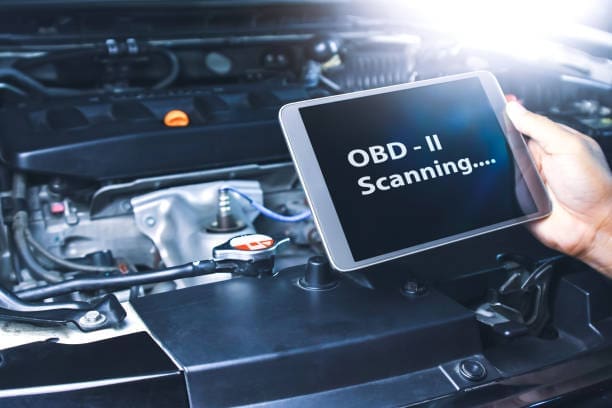Introduction
Table of Contents
ToggleCan I Get the Odometer Mileage via My OBD Port is equipped with numerous electronic systems that can provide a wealth of information about the vehicle’s performance and status. One of the most commonly accessed data points is the odometer mileage. This article explores whether you can retrieve odometer mileage via the On-Board Diagnostics (OBD) port and discusses the traceability of such actions.
Understanding the OBD Port

What is the OBD Port?
The onboard diagnostics (OBD) port is a standardized interface that allows external devices to communicate with a vehicle’s electronic control units (ECUs). Initially developed to monitor vehicle emissions, the OBD system now provides access to a broad range of data, including engine performance, fault codes, and sensor readings.
Types of OBD Systems
There are two primary types of OBD systems:
- OBD-I: An early version used in vehicles before 1996, with manufacturer-specific protocols.
- OBD-II: A standardized version mandated in all cars and light trucks manufactured in the United States from 1996 onward. It uses a universal connector and communication protocols.
Retrieving Odometer Mileage via OBD
Feasibility of Accessing Odometer Data
Many modern vehicles store odometer readings in the instrument cluster or the body control module (BCM), which can often be accessed through the OBD-II port. Specialized diagnostic tools and software can read this data, provided the vehicle’s manufacturer allows access to the odometer information through the OBD-II interface.
Tools and Software Required
To retrieve odometer mileage via the OBD port, you typically need:
- OBD-II Scanner: A device that plugs into the OBD-II port to read and clear diagnostic trouble codes (DTCs) and access various data points.
- Diagnostic Software: Software that can interpret the data from the OBD-II scanner. Some popular software includes Torque, CarScanner, and manufacturer-specific programs like VCDS for Volkswagen or INPA for BMW.
- Data Cable or Bluetooth Adapter: To connect the OBD-II scanner to a computer or smartphone.
Steps to Retrieve Odometer Mileage
- Connect the OBD-II Scanner: Plug the scanner into the OBD-II port, usually located under the dashboard near the steering column.
- Launch the Diagnostic Software: Open the diagnostic software on your computer or smartphone.
- Select the Odometer Reading Option: Navigate through the software to find the odometer reading feature. This may be listed under live data, vehicle information, or similar categories.
- Retrieve the Data: The software will display the current odometer mileage. Some tools may also allow you to export or save this data.
Legal and Ethical Considerations
Legality of Accessing Odometer Data
Accessing your vehicle’s odometer data via the OBD port is generally legal, as it involves retrieving information about your own property. However, altering or tampering with odometer readings is illegal in many jurisdictions, as it can lead to fraud or misrepresentation of the vehicle’s condition.
Ethical Implications
While accessing odometer data is typically harmless, ethical concerns arise when individuals use this information for fraudulent purposes, such as rolling back the odometer to misrepresent a vehicle’s mileage. This practice can deceive potential buyers and lead to significant financial and safety risks.
Traceability of OBD Access
Can OBD Access Be Traced?
When you connect a device to the OBD port, it generally leaves no permanent trace on the vehicle’s systems. However, certain advanced diagnostic systems may log access events, including the type of device used and the data accessed. This logging is more common in high-end vehicles with sophisticated electronic systems.
Manufacturer Logging
Some vehicle manufacturers implement logging mechanisms to track diagnostic access, primarily for warranty and maintenance purposes. These logs can record the time and date of OBD access, the diagnostic tool used, and any changes made to the vehicle’s software or settings.
Data Privacy and Security
Accessing a vehicle’s OBD port raises concerns about data privacy and security. Unauthorized access to OBD data can potentially expose sensitive information about the vehicle and its owner. Ensuring that only trusted individuals and tools access your vehicle’s OBD port is crucial to maintaining privacy and security.
Practical Applications of Odometer Data
Maintenance and Servicing
Accurate odometer readings are essential for scheduling maintenance and servicing. By accessing odometer data via the OBD port, vehicle owners and mechanics can ensure that the vehicle receives timely oil changes, brake inspections, and other essential services.
Vehicle History Reports
Odometer readings play a crucial role in generating vehicle history reports. Prospective buyers often rely on these reports to assess the condition and value of a used vehicle. Accessing accurate odometer data helps maintain the integrity of these reports.
Fleet Management
For businesses that operate vehicle fleets, monitoring odometer readings is vital for managing maintenance schedules, tracking vehicle usage, and ensuring compliance with regulatory requirements. OBD-II tools can streamline this process by providing real-time access to odometer data.
Challenges and Limitations
Compatibility Issues
Not all vehicles store odometer data in a location accessible via the OBD-II port. Some older models or specific manufacturers may restrict access to this information, making it challenging to retrieve odometer readings using standard OBD-II tools.
Accuracy of Data
While OBD-II tools can provide odometer readings, the accuracy of this data depends on the vehicle’s electronic systems and the quality of the diagnostic tool used. Inaccurate readings can result from faulty sensors, software glitches, or unauthorized modifications.
Technical Expertise
Retrieving odometer data via the OBD port requires a certain level of technical expertise. Vehicle owners unfamiliar with diagnostic tools and software may find the process intimidating or challenging, necessitating professional assistance.
Future Developments

Advanced Diagnostics
As vehicle technology evolves, advanced diagnostic tools are becoming more sophisticated. Future developments may include more user-friendly interfaces, enhanced data accuracy, and broader access to vehicle information through the OBD-II port.
Regulatory Changes
Governments and regulatory bodies are continuously updating laws and guidelines regarding vehicle diagnostics and data access. Staying informed about these changes can help vehicle owners and professionals navigate the legal landscape and avoid potential pitfalls.
Integration with IoT
The integration of Internet of Things (IoT) technology with vehicle diagnostics is an emerging trend. IoT-enabled devices can provide real-time monitoring and reporting of odometer data, enhancing fleet management, maintenance scheduling, and vehicle tracking capabilities.
Conclusion
Accessing odometer mileage via the OBD port is a feasible and practical solution for vehicle owners, mechanics, and fleet managers. While the process is generally straightforward, it requires the right tools and a basic understanding of vehicle diagnostics. Legal and ethical considerations are paramount, as tampering with odometer readings can have serious consequences.
Although OBD access is typically untraceable, certain advanced systems and manufacturers may log diagnostic events. Vehicle owners should remain mindful of data privacy and security, ensuring that only authorized individuals access their vehicle’s OBD port.
Looking ahead, advancements in diagnostic technology and regulatory changes will continue to shape the landscape of vehicle data access. By staying informed and leveraging the right tools, individuals can harness the power of OBD diagnostics to maintain their vehicles, uphold ethical standards, and ensure compliance with legal requirements.



